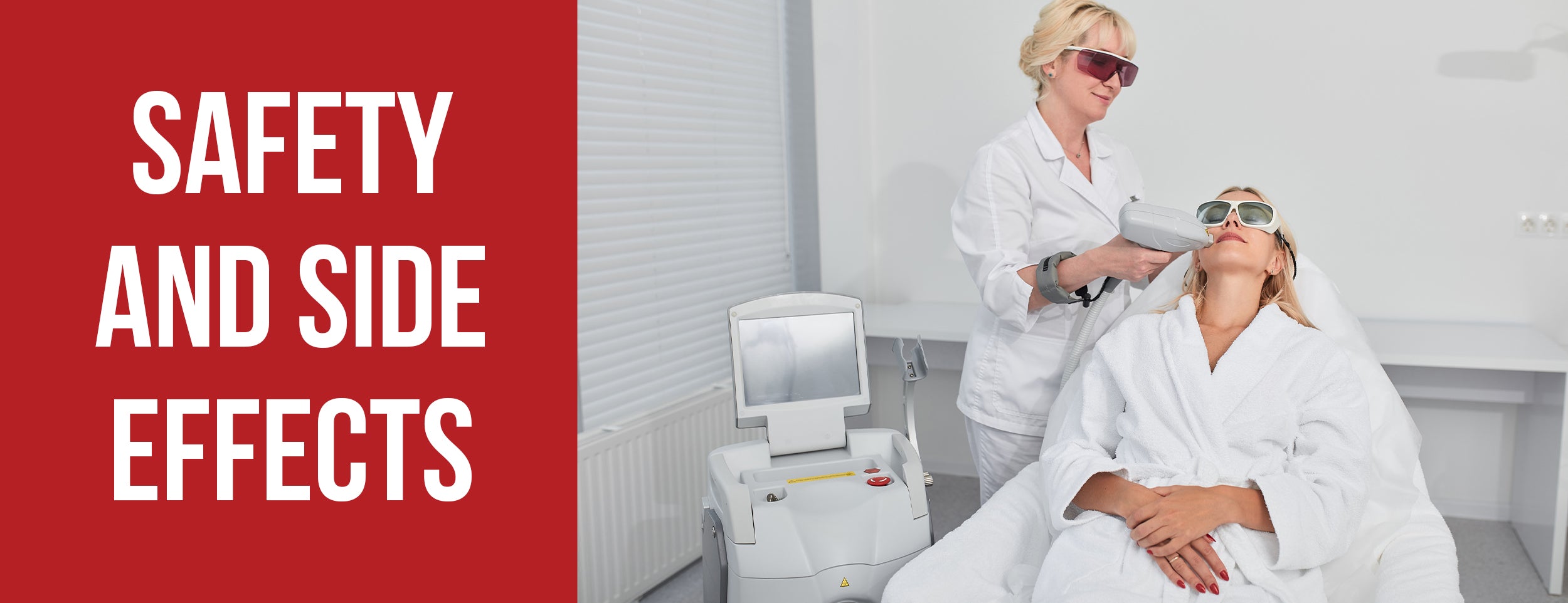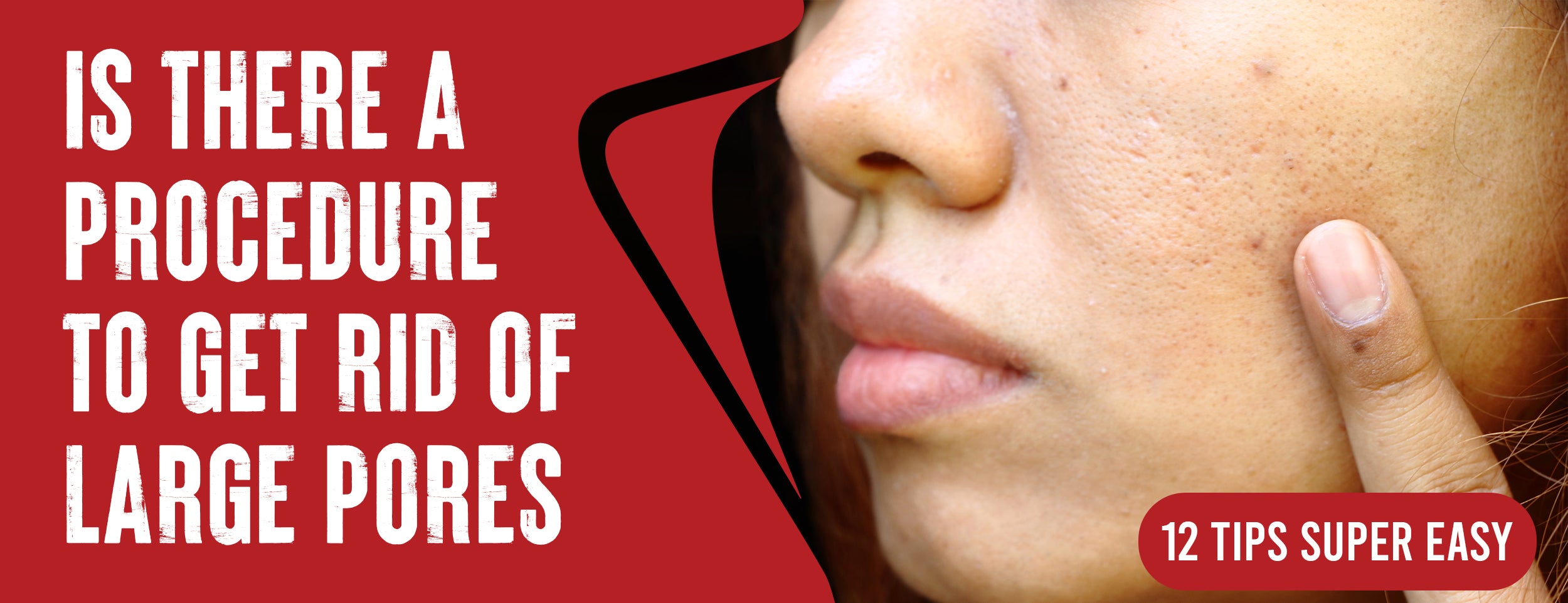Electrolysis and laser hair removal are highly sought-after techniques for achieving long-term reduction of unwanted hair. These methods utilize the power of electricity or light to effectively target and impair hair follicles, specifically in areas of the face like the upper lip, chin, cheeks, eyebrows, and sideburns. Before deciding, it is crucial to evaluate the advantages and disadvantages of each approach carefully.
Electrolysis offers a permanent solution, unlike laser hair removal, completely halting hair growth. While laser hair removal slows and decreases hair growth, electrolysis requires around 14 sessions and can be time-consuming. Expect full results in up to 18 months.
This article comprehensively compares electrolysis and laser hair removal for facial hair in terms of permanence, efficiency, pain, cost, safety, and the choice between professional treatment and DIY options. It also discusses factors that affect facial hair growth and the suitability of each method for different skin and hair types.
Electrolysis or Laser for Facial Hair: Choosing the Right Method

A laser hair removal and an electrolysis procedure are both methods of permanent or semi-permanent hair reduction that use electricity or light to destroy the hair follicles in the skin. However, they work in different ways and have different advantages and disadvantages.
Facial Hair Removal with Electrolysis vs. Laser: A Comparison
When comparing facial hair removal methods, electrolysis, and laser each offer unique benefits. Electrolysis is a permanent solution that destroys the hair follicle entirely, while laser hair removal provides long-term results. Consider factors like precision, time required, pain tolerance, and desired outcome to make the best choice for your needs.

Permanence and Efficiency
One of the main factors to consider when choosing a hair removal method is how long the results will last and how many sessions are needed to achieve them.
Electrolysis: A permanent solution for unwanted hair growth because it destroys the entire hair follicle, including the root and the stem cells that produce new hair. This means that once a hair follicle is treated with electrolysis, it will not grow back again. However, this also means electrolysis requires more precision and time than laser hair removal. Electrolysis treats one hair at a time by inserting a fine needle into the follicle and applying an electric current.
Depending on the size of the area to be treated, electrolysis can take a few minutes to several hours per session. You may need anywhere from 15 to 30 sessions to achieve complete hair removal on your face.
Laser hair removal: This is not a permanent solution but a long-term one. Laser hair removal works by emitting pulses of light absorbed by the pigment (melanin) in the hair follicle. The heat from the light damages the follicle enough to slow down or stop its growth cycle. Laser hair removal does not destroy the follicle completely, so some hairs may grow back over time or become finer and lighter in color.
Laser hair removal treats multiple hairs at once by covering a larger skin area with each pulse. Depending on the type of laser used, a session may take between ten minutes and an hour. You may need anywhere from 4 to 8 sessions to achieve optimal results on your face.
Some may opt for a hybrid approach combining laser and electrolysis hair removal.
For example, you may use laser hair removal to reduce most unwanted hairs on your face and then use electrolysis to target any remaining hairs that are too light or too fine for laser treatment. You can benefit from both methods’ strengths and minimize their weaknesses.
Pain and Discomfort

Another factor to consider when selecting a hair removal technique is how much pain or discomfort you will tolerate during and after the procedure.
Electrolysis: This can be painful because it involves inserting a needle into each hair follicle and applying electricity that causes heat and chemical reactions. The pain level depends on your pain threshold, the size and location of the treatment area, the type of electrolysis method used, and the skill of the electrologist. Some people describe electrolysis as feeling like a sting, a pinch, or a zap.
Others may experience more intense sensations like burning, throbbing, or cramping. To reduce the pain, you may use numbing options such as ice, topical creams, or injections before or during the procedure. You may also take over-the-counter painkillers after the procedure.
Laser hair removal: This can also be uncomfortable because it involves exposing your skin to pulses of high-heat light that damage the hair follicles. The level of discomfort depends on your skin and hair type, the type and settings of the laser, and the expertise of the laser technician. Some people describe laser hair removal as a rubber band snapping against your skin.
Other people may feel more intense sensations like heat, tingling, or prickling. To manage the discomfort, you may use cooling options such as gel, air spray, or ice before or during the procedure. Painkillers may also be taken after the procedure.
Cost Considerations
It is also important to consider how much it will cost and whether it is worth it for your budget and goals.
Electrolysis: is an investment that requires more upfront cost but less maintenance cost than laser hair removal. The cost of electrolysis depends on several factors, such as the area being treated and the number and length of sessions needed, the electrolysis method, and the electrologist's rates.
According to WebMD, electrolysis can cost anywhere from $30 to $200 per session. Once you complete your treatment course, you will not need further sessions to maintain your results. This means electrolysis can save you money in the long run compared to other hair removal methods requiring regular upkeep.
Laser hair removal: This is a more affordable option that requires less upfront cost but more maintenance cost than electrolysis. The cost of laser hair removal varies according to several factors, including the affected area, the frequency of sessions needed, laser settings, and rates of the laser clinic.
According to WebMD, laser hair removal can cost anywhere from $50 to $300 per session. Unlike electrolysis, laser hair removal does not guarantee permanent results. You may need periodic touch-up sessions to maintain your results or deal with regrowth or changes in your hair growth cycle. This means laser hair removal can cost you more money in the long run than electrolysis.
When weighing the cost of electrolysis vs. hair removal with lasers, you should consider the initial price and the long-term value. You should also factor in your personal preferences, expectations, and goals.
For example, if you want a permanent solution for unwanted facial hair and are willing to pay more upfront and endure more pain, then electrolysis may be a better option. Laser hair removal may be a better option if you want a fast and convenient solution for unwanted facial hair. You are willing to pay less upfront but more over time and accept some hair growth changes or regrowth.
Safety and Side Effects

It is also important when choosing hair removal for your face is how safe it is and what side effects it may cause. Laser hair removal and electrolysis are generally safe and effective by qualified and experienced professionals. Still, they also carry potential risks and complications you should be aware of.
Electrolysis Safety
Electrolysis is a safe method of permanent hair removal by a certified electrologist who follows proper hygiene and sterilization protocols. Electrolysis can also cause skin reactions and infections if not done properly or hygienically. Some of the possible side effects of electrolysis are:
- Redness, swelling, or inflammation of the treated area. This normal and temporary reaction usually subsides within a few hours or days after the procedure. You can apply ice, aloe vera gel, or an anti-inflammatory cream to soothe the skin and reduce the swelling.
- Scarring, keloids, or hyperpigmentation of the treated area. This rare and permanent reaction occurs when the skin heals abnormally or excessively after the procedure. You can prevent this by avoiding scratching, picking, or rubbing the treated area and applying sunscreen to protect it from sun exposure. You can also consult a dermatologist for treatment options if scarring or hyperpigmentation occurs.
- Infection of the treated area. This is a severe reaction when bacteria enter the skin through needle punctures or hair follicles. Prevent it by choosing a reputable electrologist who uses sterile needles, following proper aftercare instructions, and watching for signs of infection like fever, pus, or foul odor. Seek medical attention immediately if needed.

Laser Safety
Laser hair removal is also a safe method of long-term hair reduction when done by a licensed laser technician who follows proper safety guidelines and precautions. Laser hair removal can also cause skin damage and complications if not done properly or appropriately. Possible side effects of laser hair removal are:
- Burns, blisters, or crusting of the treated area. This is a common temporary reaction when the skin is exposed to excessive heat or light from the laser. Prevent it by choosing a suitable laser type and setting for your skin and hair and following pre-treatment instructions like shaving the area and avoiding sun exposure, tanning, or bleaching. Use ice, aloe vera gel, or antibiotic cream to heal the skin and prevent infection.
- Hyperpigmentation or hypopigmentation of the treated area. Uncommon but permanent reactions can be prevented due to excessive or insufficient melanin production after a procedure. Choose an appropriate laser type and setting, follow pre-treatment instructions, and avoid sun exposure, tanning, or bleaching. It is important to consult a dermatologist if hyperpigmentation or hypopigmentation occurs.
- Eye injury from the laser beam. This is a rare and serious reaction that occurs when the eyes are exposed to direct or reflected light from the laser. You can prevent this by wearing protective eyewear during the procedure and choosing a reputable laser clinic that uses appropriate safety measures, such as covering mirrors or windows that may reflect the laser beam.
DIY vs. Professional Treatment

You should also consider whether to do it at home or see a professional at a clinic or salon. Both options have their pros and cons that you should weigh carefully.
At-home Electrolysis and Laser Options
Some at-home devices claim to offer electrolysis and laser hair removal. These devices are usually cheaper, more convenient, and more private than professional treatment options, but they are also less effective, less safe, and less reliable than professional treatment options.
Some of the drawbacks of at-home electrolysis or laser devices are:
- The FDA or other authorities do not regulate them, so they may not meet quality standards or safety requirements.
- They are not designed for all skin and hair types, so they may not work well on your face or cause adverse effects such as burns, scars, or infections.
- They are not powerful enough to deliver permanent results, so that they may require more sessions or maintenance than professional treatment options.
- They are not easy to use correctly, so they may cause errors or injuries if you do not follow instructions carefully or have proper training.
The Value of Professional Expertise
Professional electrolysis or laser treatment options are usually more expensive, more time-consuming, and less private than at-home devices. Still, they are also more effective, safer, and reliable than at-home devices.
Some of the benefits of laser or electrolysis treatments include:
- The FDA or other authorities regulate them to meet quality standards and safety requirements.
- They suit all skin types, so you can work well on your face and avoid burning, scarring or infection.
- They are powerful enough to deliver permanent or long-term results, requiring fewer sessions or maintenance than at-home devices.
- They are easy to use correctly, delivering optimal results and preventing errors or injuries if you follow instructions carefully and have proper training.
Potential Consequences of Improper DIY Treatments
If you decide to use an at-home device for laser hair removal or electrolysis for facial hair, you should be aware of the risks associated with improper DIY procedures. These consequences may include:
- Wasting money on a device that does not work well or on your face.
- Damaging your skin or eyes with burns, blisters, scars, infections, or injuries from the device.
- Stimulating more hair growth or changing the texture or color of your hair from the device.
- Having uneven or patchy results or repeating the treatment more often from the device.
Facial Hair Growth: What You Need to Know?

Before selecting a hair removal method for your face, it is helpful to understand how facial hair grows and what factors affect it. This way, you can have realistic expectations about your results and choose a method that suits your skin and hair type.
The Science Behind Facial Hair
Facial hair is a secondary sex characteristic that develops during puberty under the influence of hormones. The main hormone responsible for facial hair growth is testosterone, which can be converted into dihydrotestosterone (DHT) by an enzyme called 5-alpha reductase.
DHT stimulates the growth and development of terminal hairs on certain areas of the face, such as the upper lip, chin, cheeks, sideburns, eyebrows, and eyelashes. Terminal hairs are thick, coarse, pigmented hairs that contrast with vellus hairs, which are fine, soft, unpigmented hairs that cover most of the body.
The amount and distribution of facial hair vary among individuals depending on their genetic makeup, ethnic background, age, and health status. Some people may have more or less facial hair than others due to differences in their hormone levels or their sensitivity to them.
Some people may also experience changes in their facial hair over time due to hormonal fluctuations or imbalances caused by stress, medication, illness, pregnancy, menopause, or medical conditions.
Types of Facial Hair
Facial hair can be classified into different types based on location and appearance. The most common types of facial hair are:
- Mustache: The hair that grows on the upper lip. Depending on personal preference and grooming habits, mustaches can vary in shape, size, and style. Some common types of mustache are the handlebar, the chevron, the pencil, and the walrus.
- Beard: Hair growing on the chin, cheeks, and neck. Personal preferences and grooming habits aside, beards can also differ in size, shape, and style. Common beards are the goatee, the stubble, the full beard, and the Van Dyke.
- Sideburns: Hair growing on the sides of the face in front of the ears. Sideburns can be short or long, thin or thick, straight or curved, according to personal preference. Some common sideburns are the mutton chops, the friendly mutton chops, and the Hollywoodian.
- Eyebrows: The hair that grows above the eyes. Eyebrows help to frame the face and express emotions. Arrows can be shaped, trimmed, plucked, waxed, or threaded according to personal preference. Some common types of eyebrows are arched, straight, curved, and feathered.
- Eyelashes: Hair that grows along the edges of the eyelids. Eyelashes protect the eyes from dust and debris and enhance their appearance. Eyelashes can be curled, lengthened, thickened, or colored according to personal preference. Some common types of eyelashes are the natural, the dramatic, the wispy, and the voluminous.
The Impact of Hormones

Hormones are key in determining how much and where facial hair grows. Hormones are chemical messengers that regulate various bodily functions such as growth, metabolism, reproduction, and mood. Hormones are produced by glands such as the pituitary, the thyroid, the adrenal, and the gonads (testes or ovaries).
The main hormone affecting facial hair growth is testosterone, produced mainly by the testes in males and the ovaries in females. Testosterone reacts with an enzyme named 5-alpha reductase to produce dihydrotestosterone (DHT).
DHT is more potent than testosterone and stimulates hair growth in certain areas of the face, including the upper lip, the chin, the cheeks, sideburns, eyebrows, and eyelashes.
The amount of testosterone and DHT in the body depends on factors such as age, genetics, ethnicity, health status, medication use, stress level, diet, exercise, and environmental exposure. These factors can cause hormonal fluctuations or imbalances affecting facial hair growth.
For example:
- Testosterone levels peak during puberty in males and then decline gradually with age. This can cause changes in facial hair growth, such as thinning or graying hairs or reduced coverage or density of hairs.
- In females, testosterone levels are normally low but can increase due to conditions such as polycystic ovary syndrome (PCOS), adrenal hyperplasia (CAH), ovarian tumors (OT), or menopause. This can cause excessive or unwanted hair growth (hirsutism) or male-pattern hair loss (androgenetic alopecia) on certain face areas, including the lips, chin, cheeks, and sideburns.
- In both males and females, stress can trigger the release of cortisol from the adrenal glands. Cortisol can interfere with testosterone production or conversion to DHT. As a result, facial hair growth may be altered, such as increased or decreased growth rate, thickness, or texture.

Electrolysis for Facial Hair Removal
Electrolysis is a permanent hair removal method that destroys hair follicles using electricity. It can treat any skin and hair type and has three methods: galvanic, thermolysis, and blend.
The pros of electrolysis are that it is FDA-approved, can target individual hairs, and is suitable for all skin types and hair. The cons are that it can be painful, time-consuming, expensive, and can cause skin reactions, and finding a qualified electrologist can be difficult.
Who Should Consider Electrolysis for Facial Hair Removal?
Electrolysis is ideal for people who desire permanent results and are willing to invest time, money, and effort. Electrolysis is especially suitable for people with light or fine hairs not responsive to laser hair removal or hormonal facial hair resistant to other hair reduction methods. Electrolysis can also correct or refine the shape of eyebrows, mustaches, or beards.
Facial Hair Removal with Lasers

Laser hair removal damages hair follicles with high-heat light, targeting the pigment in the hair follicle. Different types of lasers are used on different types of skin and hair.
Laser hair removal is more effective on dark and coarse hairs than on light and fine hairs. The effectiveness also depends on the type of facial hair being treated, and multiple sessions are needed to target all hairs in different growth phases.
Who Should Consider Facial Hair Removal by Laser?
Laser hair removal is ideal for people who want to get rid of unwanted facial hair quickly and are willing to accept some regrowth or changes in their hair growth cycle. Laser hair removal is particularly effective for people with dark and coarse hairs responsive to laser treatment or people with large areas of facial hair that are difficult to treat with other methods. Laser hair removal can also reduce or reshape the density or thickness of eyebrows, mustaches, or beards.
Laser hair removal may not be suitable for everyone due to various factors. Skin and hair types should be considered to avoid potential damage or adverse effects. Additionally, pain and discomfort can be managed through cooling options and painkillers. It's important to note that permanent results are not guaranteed, and periodic touch-up sessions may be required.
Conclusion
Lasers or electrolysis are two of the most common methods for reducing unwanted facial hair. This article compares their effectiveness, permanence, cost, safety, and side effects. Factors affecting hair growth and method suitability based on skin and hair type are also discussed. Pros and cons of DIY vs. professional options are explored.
Consider personal preferences, expectations, goals, budget, and availability when choosing electrolysis and laser hair removal. Seek advice from a dermatologist or hair removal specialist and research reputable electrologists or laser technicians for quality service and care.















![The Cost of Full Body Electrolysis: 4 Factors and 5 Costs [with 3 Alternatives]](http://drnumb.com/cdn/shop/articles/How_Much_Is_Full_Body_Electrolysis_4_Factors_Cost_Efficiency.jpg?v=1713417391)
![The 6 factors that cause scarring [7 tips to prevent and manage it]](http://drnumb.com/cdn/shop/articles/Does_Electrolysis_Cause_Scarring__5_Reasons_7_Prevention_Tips.jpg?v=1713357293)



